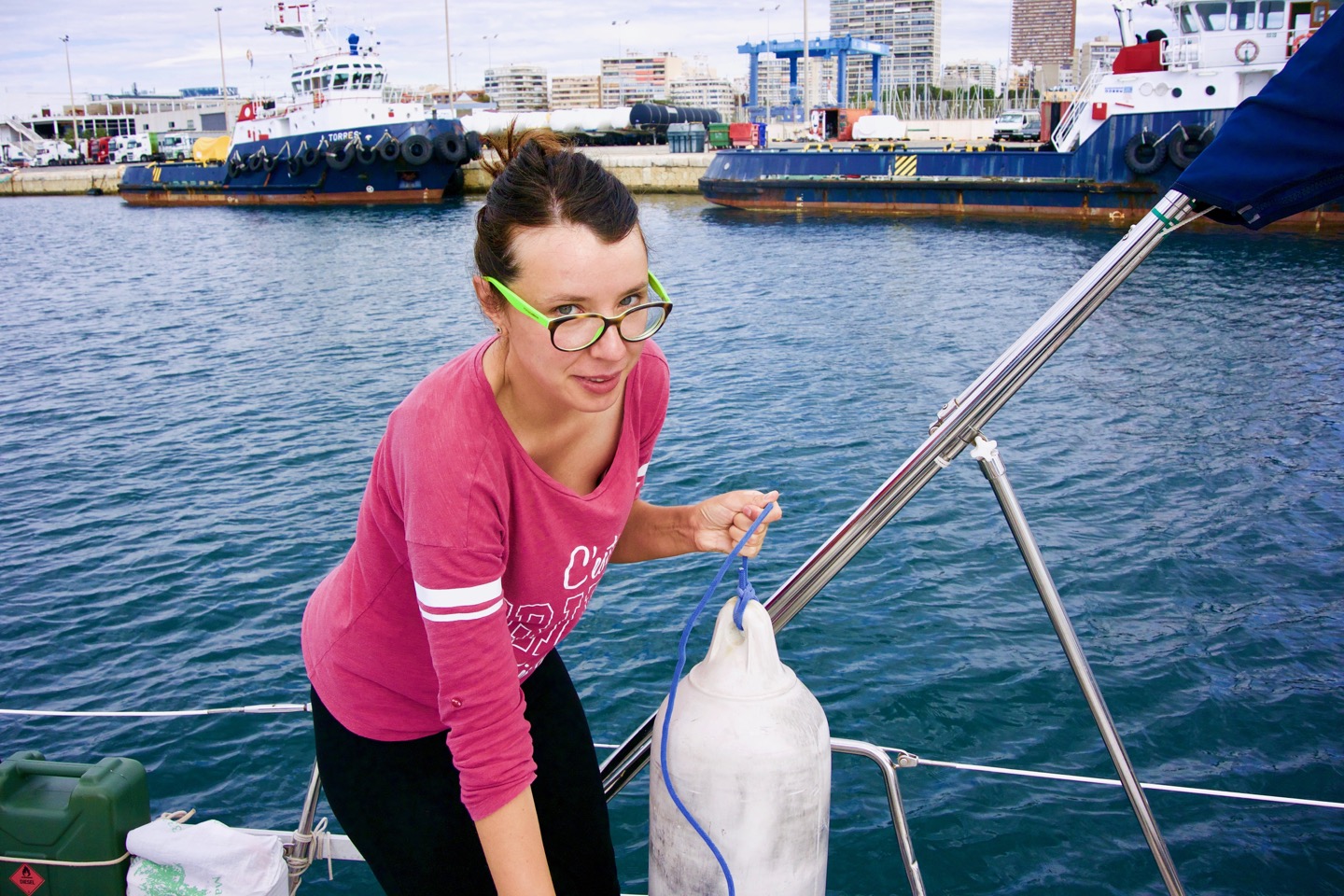Mar Menor and Alicante
Alicante,
Mar Menor,
Sailing
After just a few days in Cartagena we pressed on. The Islas Baleares were not too far away now and luring us with promises of turquoise waters and good anchorages. So we motored out of Cartagena's big harbour and turned left, further northeast up the coast of Mediterranean Spain.

A short 26 miles up the coast is a 170 km² large piece of the sea separated from the rest of the Med by a thin strip of land, La Manga (the sleeve). The Mar Menor (little sea) features a few islands and no more than 7 m depth throughout, so a perfect playground for our anchor. There is a canal through La Manga at Tomás Maestre, with a drawbridge and a unfinished marina on the outside.
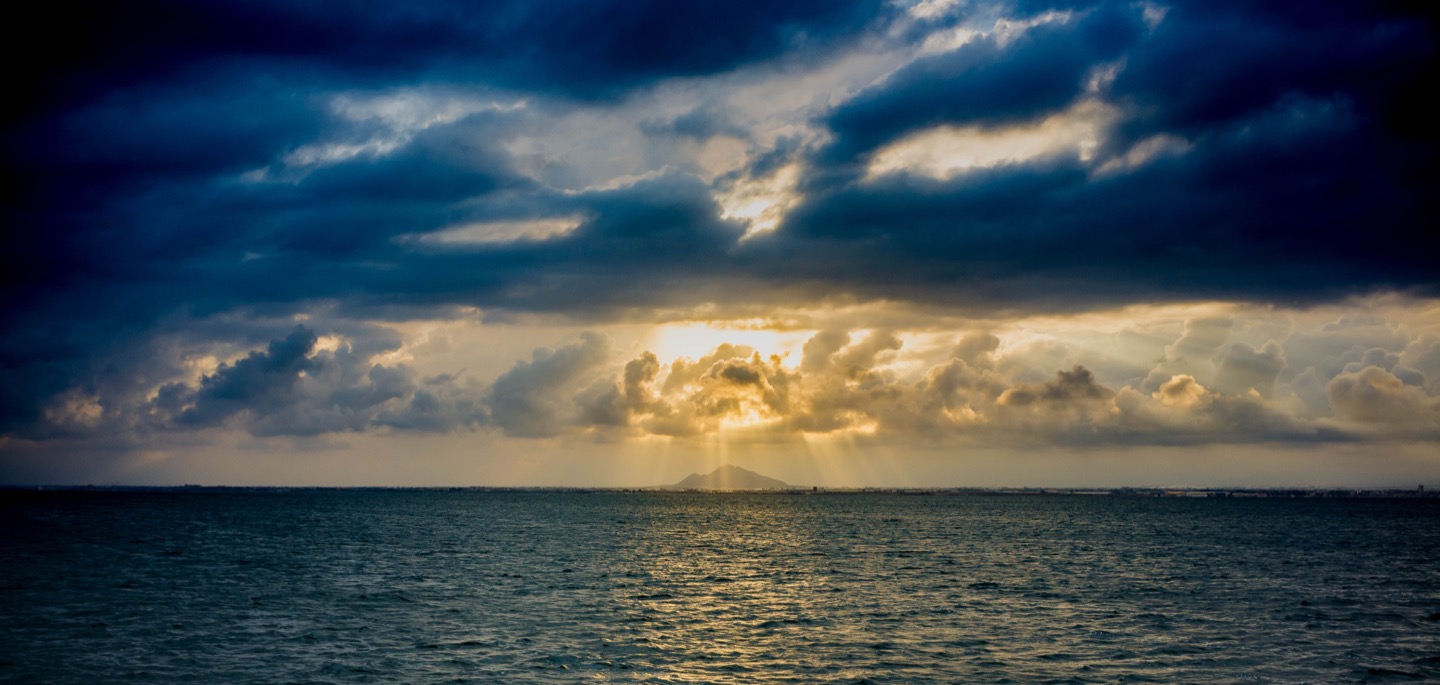
We headed for this "marina", which consisted merely of a few sheet piles driven into the seafloor and little else. They were enough to provide shelter from the swell though, so we anchored right in the empty area between them and had some food while waiting for the bridge to open. The pilot book had the wrong times for the bridge, but we found online that it was to open in an hour, so we soon raised the anchor again and headed into the channel 10 minutes before the presumed opening time.
Passing through the channel is a bit hairy, as it is very shallow - barely more than our 2m draft, and only in the middle at that. There is no room for error and not even space to hover in. We waited at the slightly wider entrance until we saw the cars stop at the drawbridge, indicating it was indeed going to open soon. Then we turned the last corner into the narrowest part. Slightly disconcertingly, an older gentleman was going for his afternoon splash on a little beach right next to us, and he was only up to his waist in the water - a few meters away from our boat. I asked him if the bridge was going to open soon, and he confirmed it was, in perfect English - the area is rather popular with British retirees.
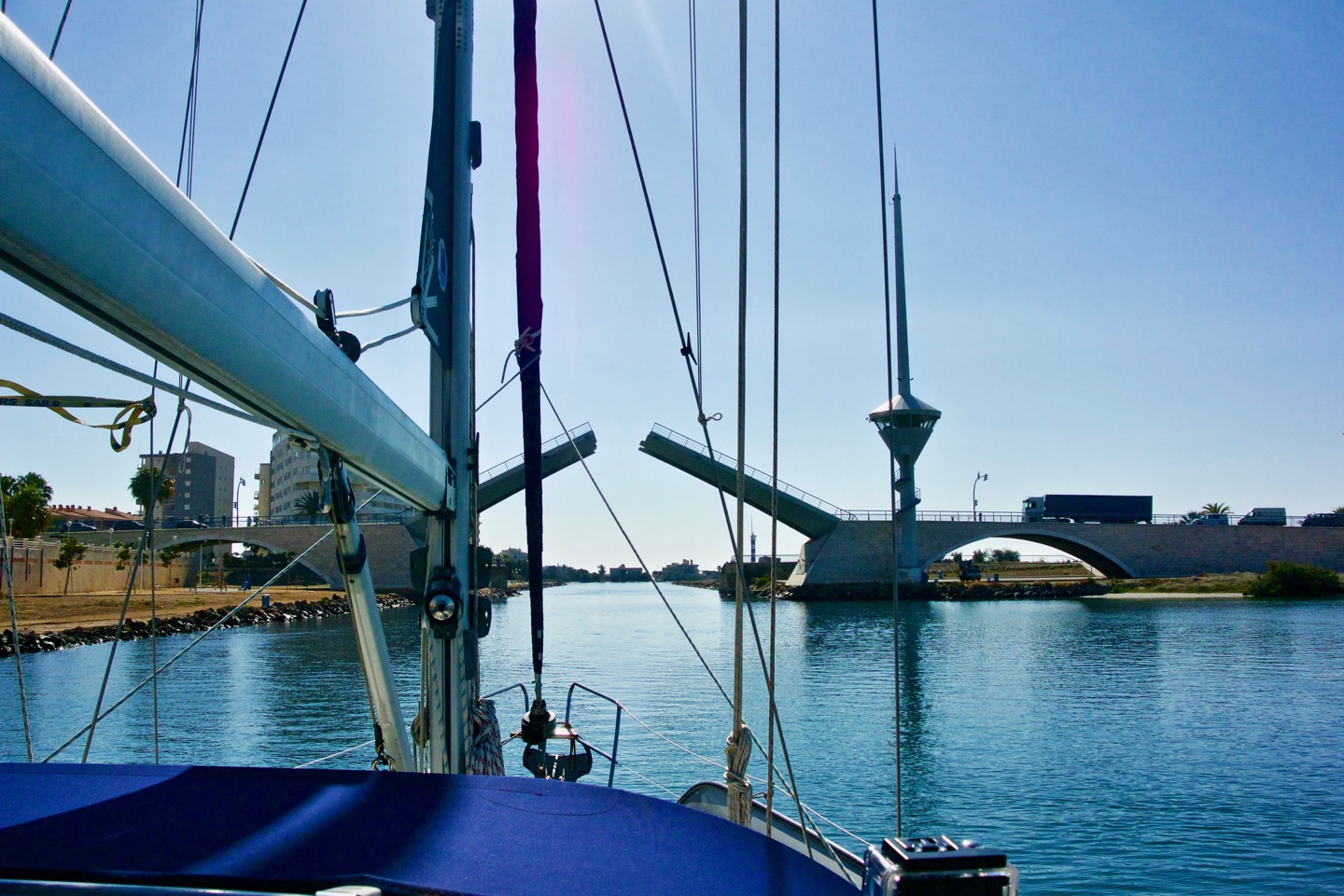
The bridge took its time and we had to go as slow as possible - couldn't stop or we'd drift out of the channel and couldn't go until the bridge opened or our mast would hit it. Eventually it did open and we picked up speed, carefully looking at the rocks framing the channel on both sides, barely visible under water. We made it through, and on the other side the channel widened and opened up to a large marina and finally the Mar Menor itself. Took a right, went a short bit away from the wash of boats passing through the canal and anchored off a beach there.
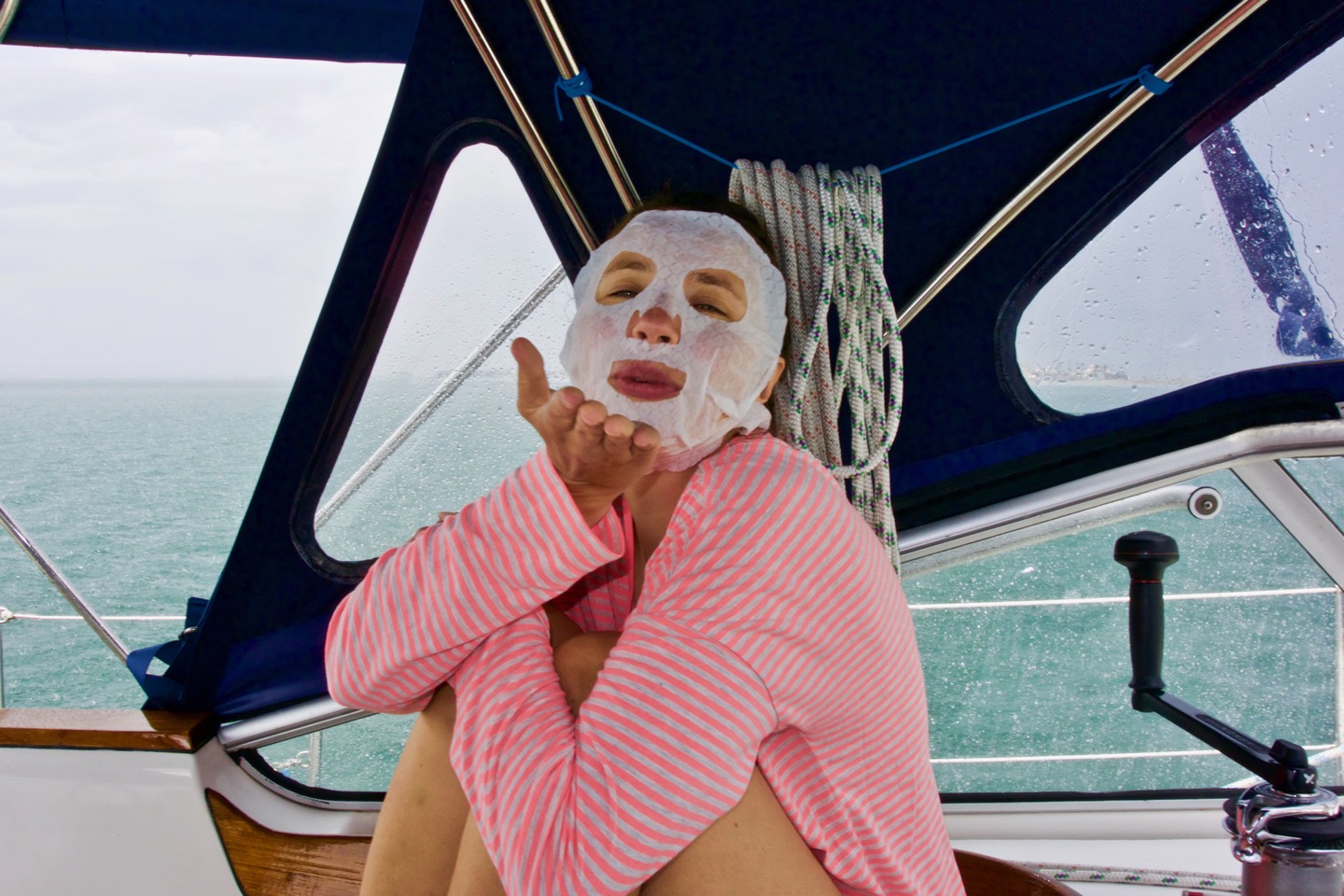
In the Mar Menor, you can indeed anchor anywhere, although it's big enough to have swell, so it's usually best to drop the hook in the shelter of a beach or island, so we moved around for a couple days. The islands were private and plastered with warning signs so we relaxed on the boat and swam a bit when the jellyfish were drifting around elsewhere.

The weather was all over the place and one night we had to shift location at two in the morning in absolute darkness, but that's life at anchor and we just slept till noon to make up for it, at which point some powerboat shenanigans woke us up. One arrived at first, and despite there being ample space, they anchored right in front of us. Then they proceeded to hang fenders on their side. Odd, I thought, perhaps they realized they were a bit close? Not so! The reason for the fenders soon became apparent when another powerboat shot in and proceeded to raft up to the first. As soon as the second one was done with that, they launched their dinghy, put their adolescent son in it and cast it off. He was soon drifting away from their boat with the wind, and it became clear that he had no idea how to row and the oars were set up all wrong in the oarlocks too. Rather than rescue efforts, his struggle caused nothing but jeers from the parental boat, so when he was drifting past us I politely asked him if he'd like some help. Of course I should've know that wouldn't work on a teenager, as he said he was fine, whilst continuing to row ineffectually and drifting off further. I changed my tone and told him to "throw me that rope", pointing at the dinghy painter attached to his bow. He did, and as he seemed to be willing to listen now, I showed him how to set up and use the oars and he soon got the hang of it and managed to row back to his still jeering family, threw the painter at them and stomped below into the powerboat's cabin, not to be seen again for the rest of the day.
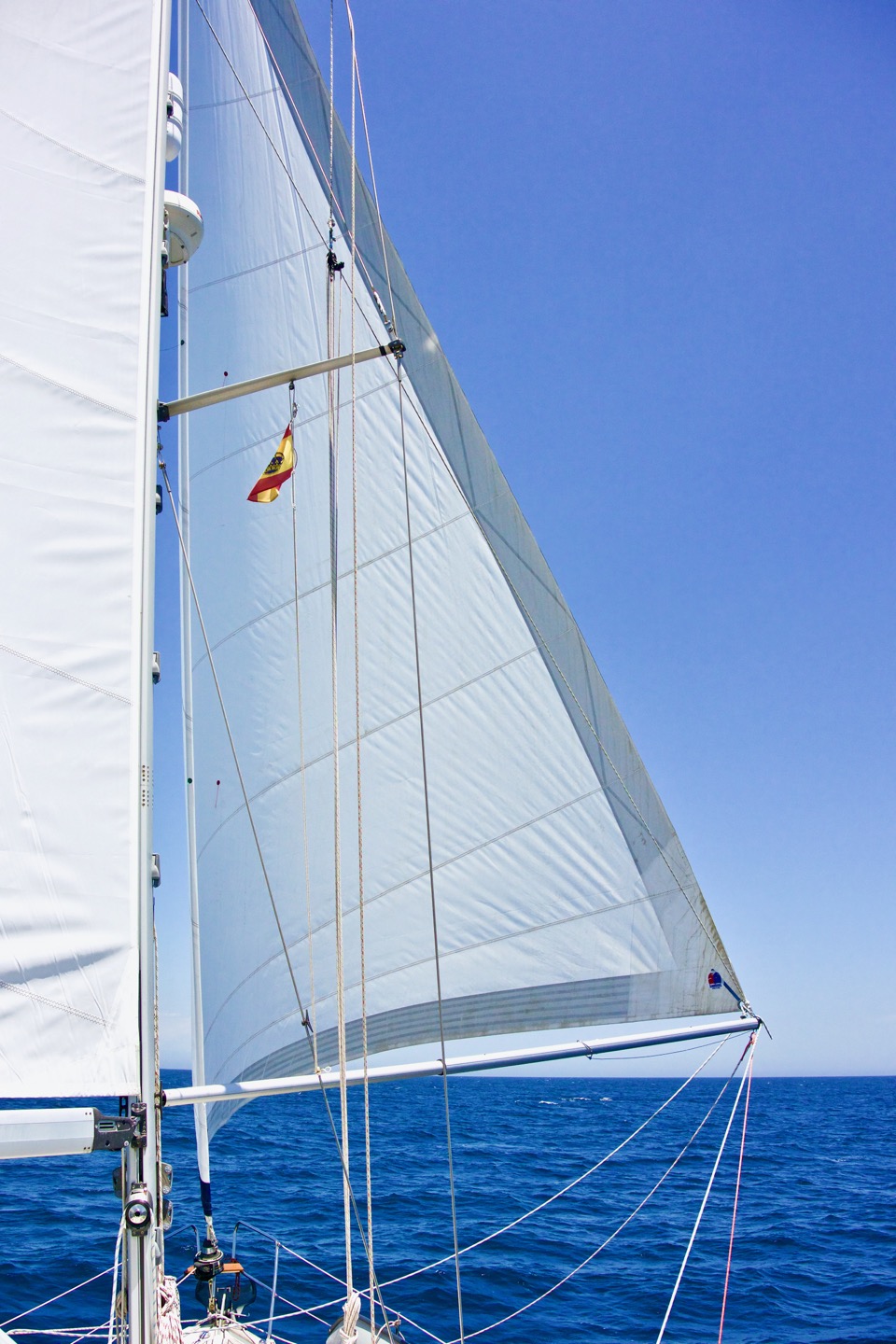
A couple days later we left the Mar Menor. Out was easier than in, as there is ample room to hover while waiting inside for the bridge to open. We pointed the boat northwards and motored a bit until the promised wind arrived. Then we had a good sail with poled out Genoa opposite preventered out Main towards Alicante, where we docked at the Real Club de Regatas de Alicante (the Royal Club of Regattas of Alicante). We chose the yacht club's visitor pontoons, as whilst they were far from cheap, they were considerably less expensive than the other marina in town.
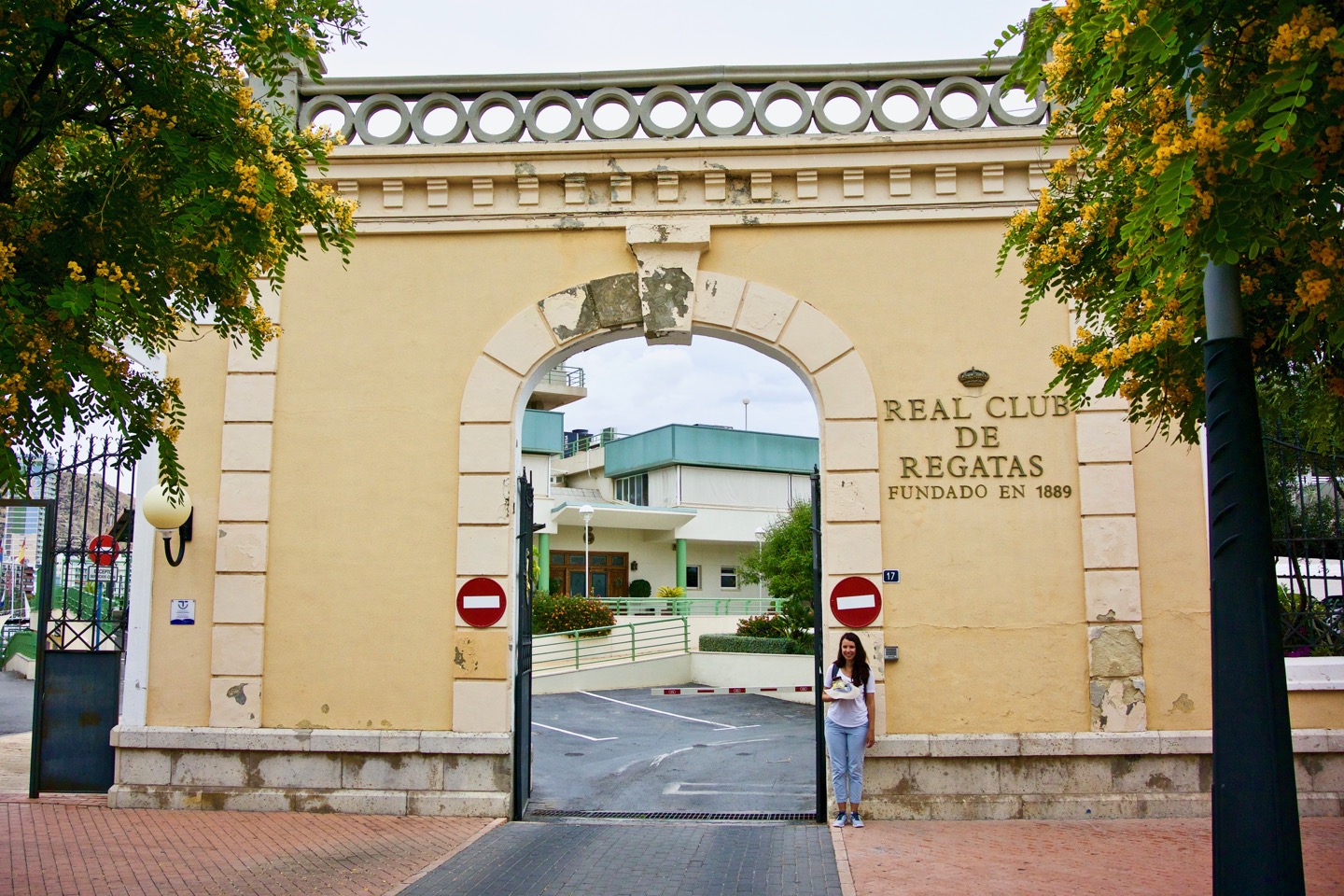
Alicante was another town worth seeing, with an even bigger castle on an even bigger hill, and we had the perfect weather to enjoy the views and take some grandiose photos.
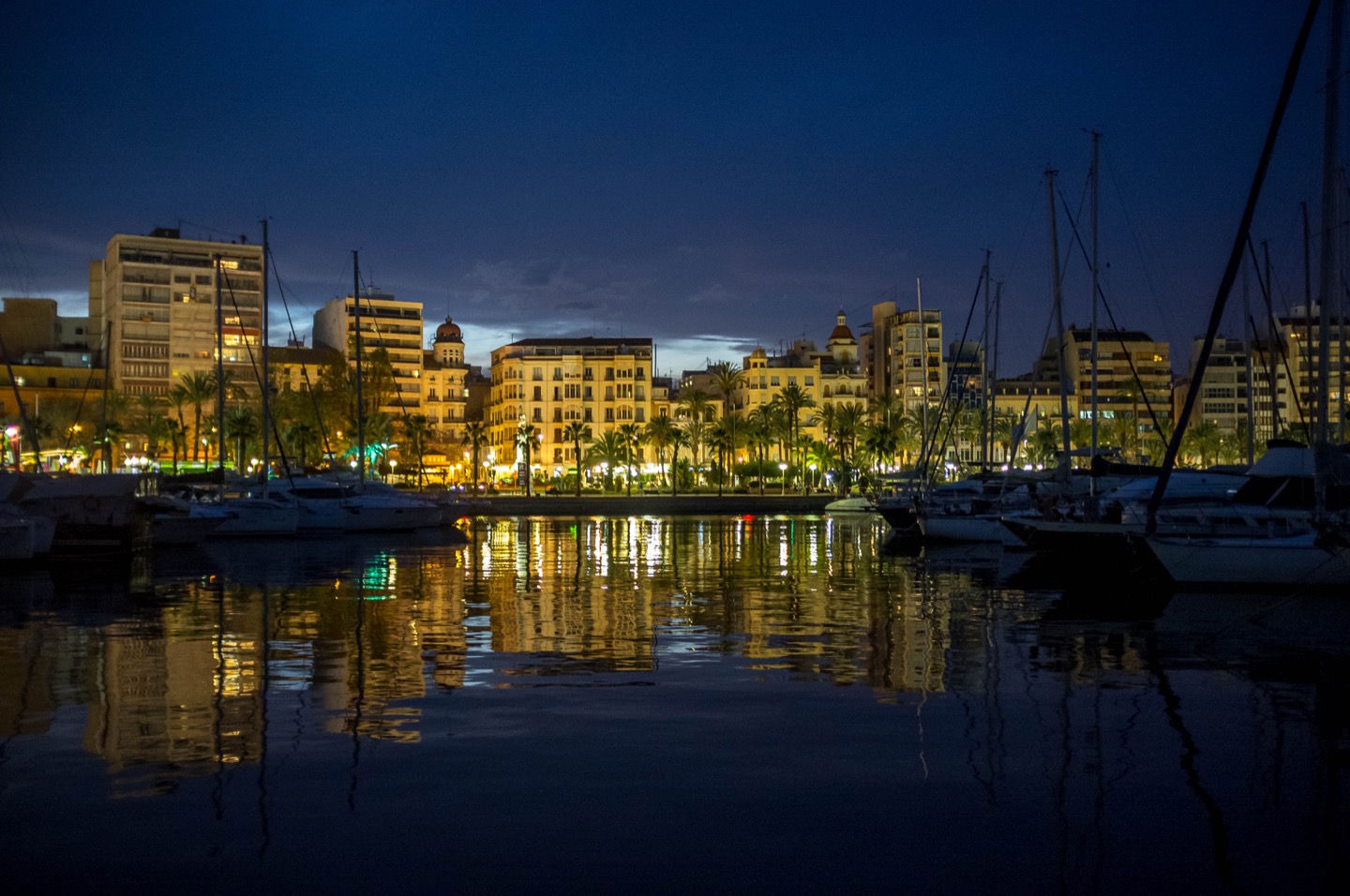
The town itself wasn't bad either, although it couldn't compete with Cartagena's effortless charme. Alicante seemed to be plastered with too many expensive high street big brand shops, although at least many of them were along some very nice alleys.
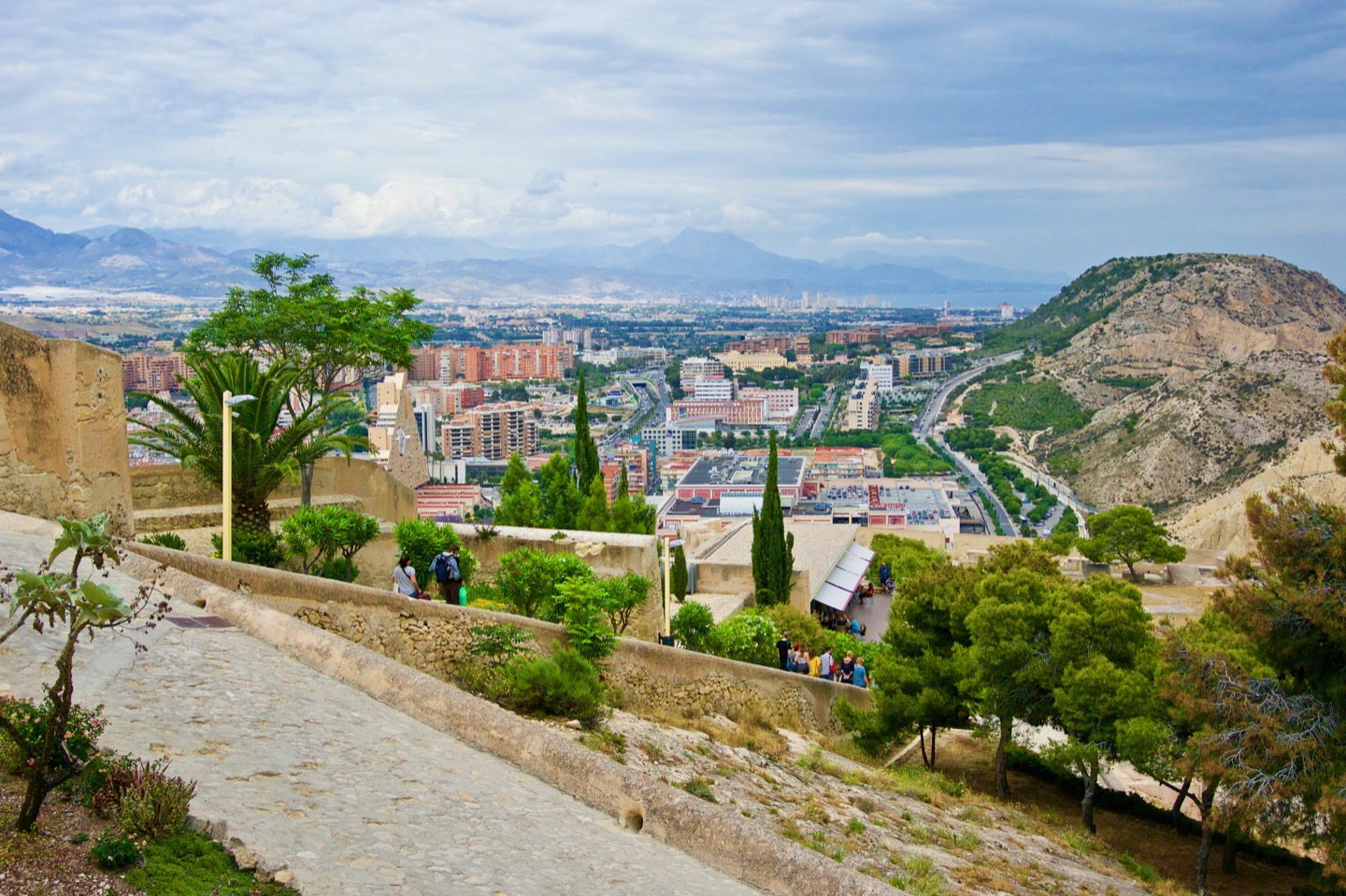
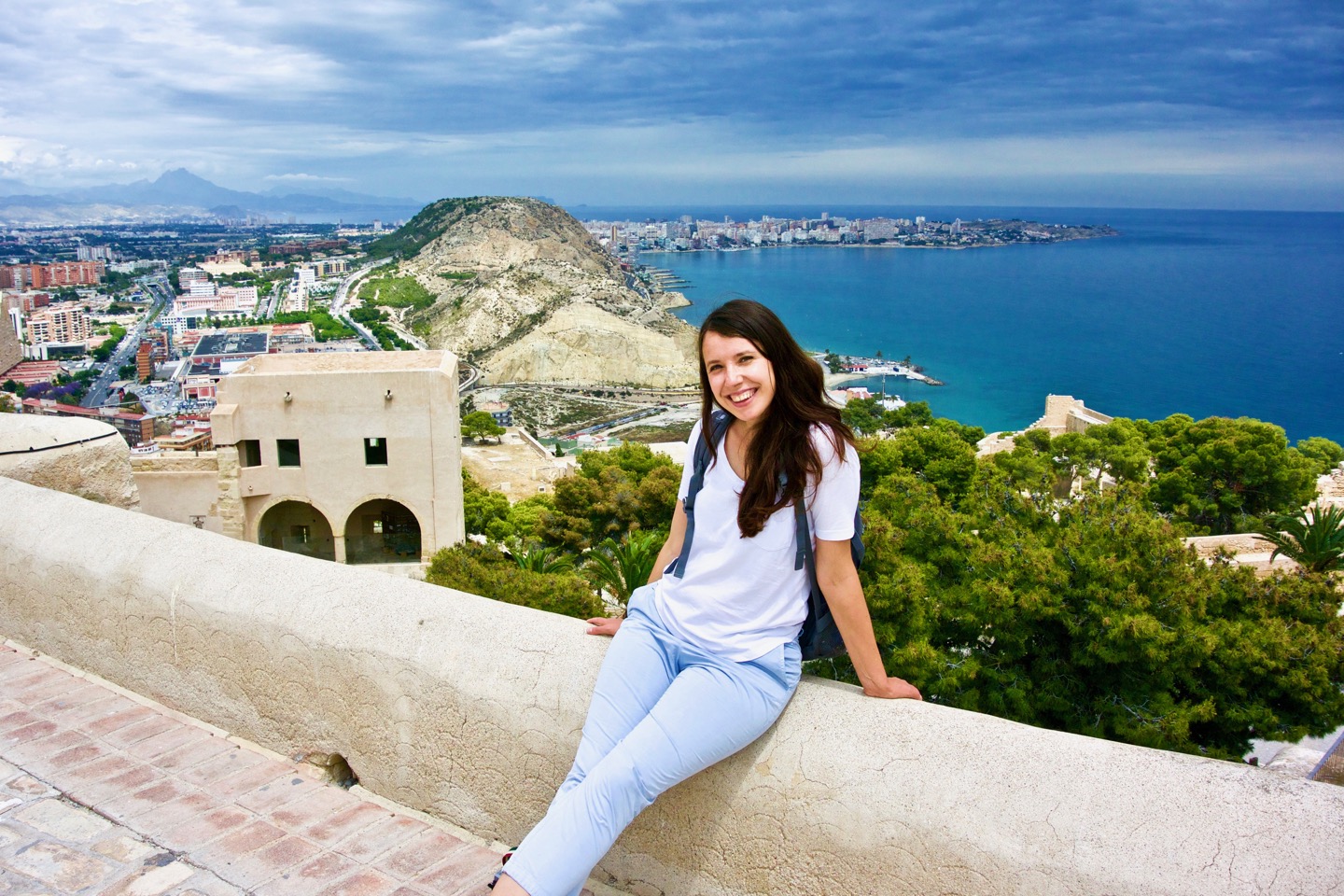
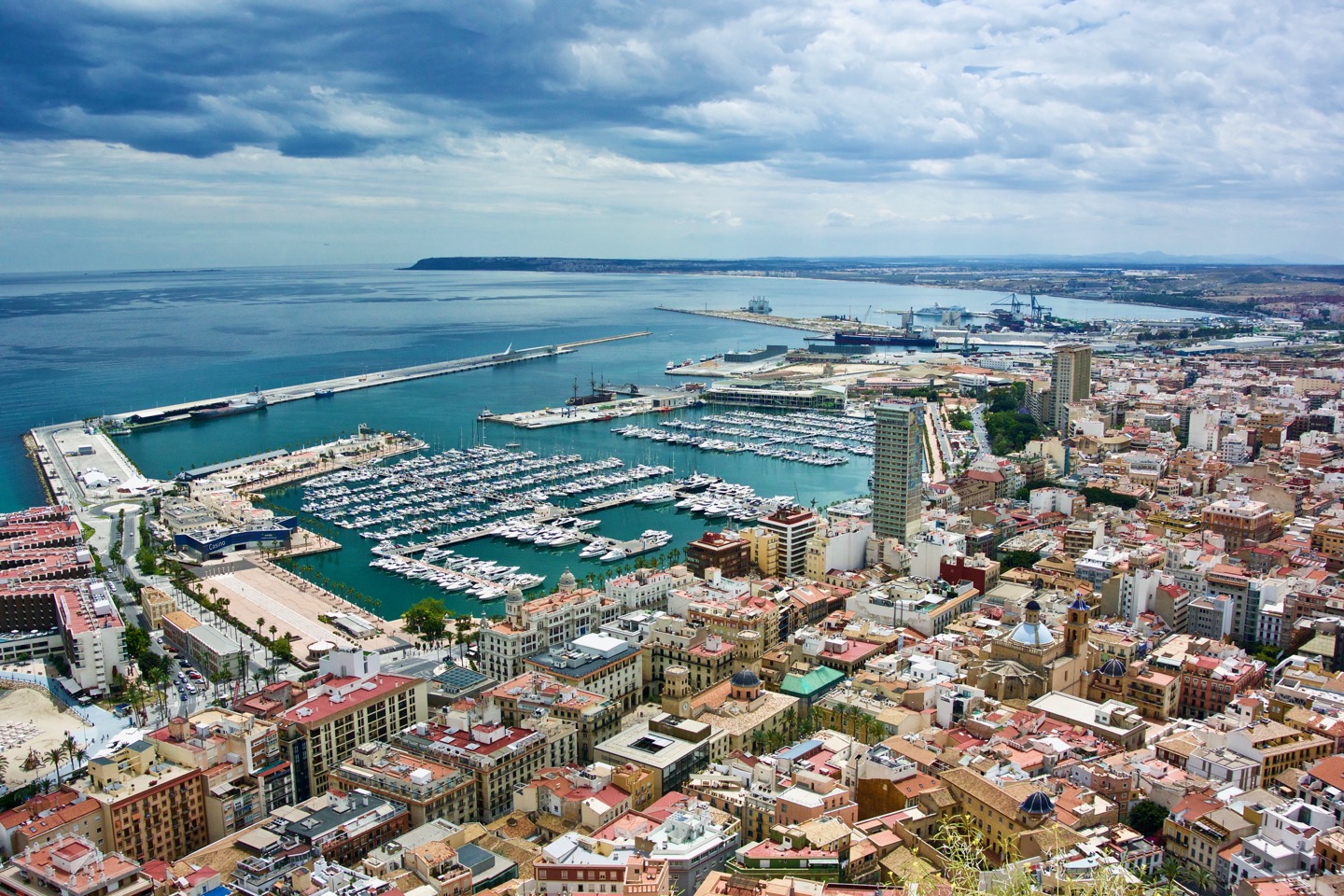
Alicante is also home to the Volvo Ocean Race, with the headquarters being right on the breakwater. There's a few VOR boats dotted around town, with one hovering on top of its impressive keel in the middle of a roundabout. The HQ building was big enough to include a museum, although this seemed to be more aimed at explaining sailing to landlubbers and had little to offer for people like us.
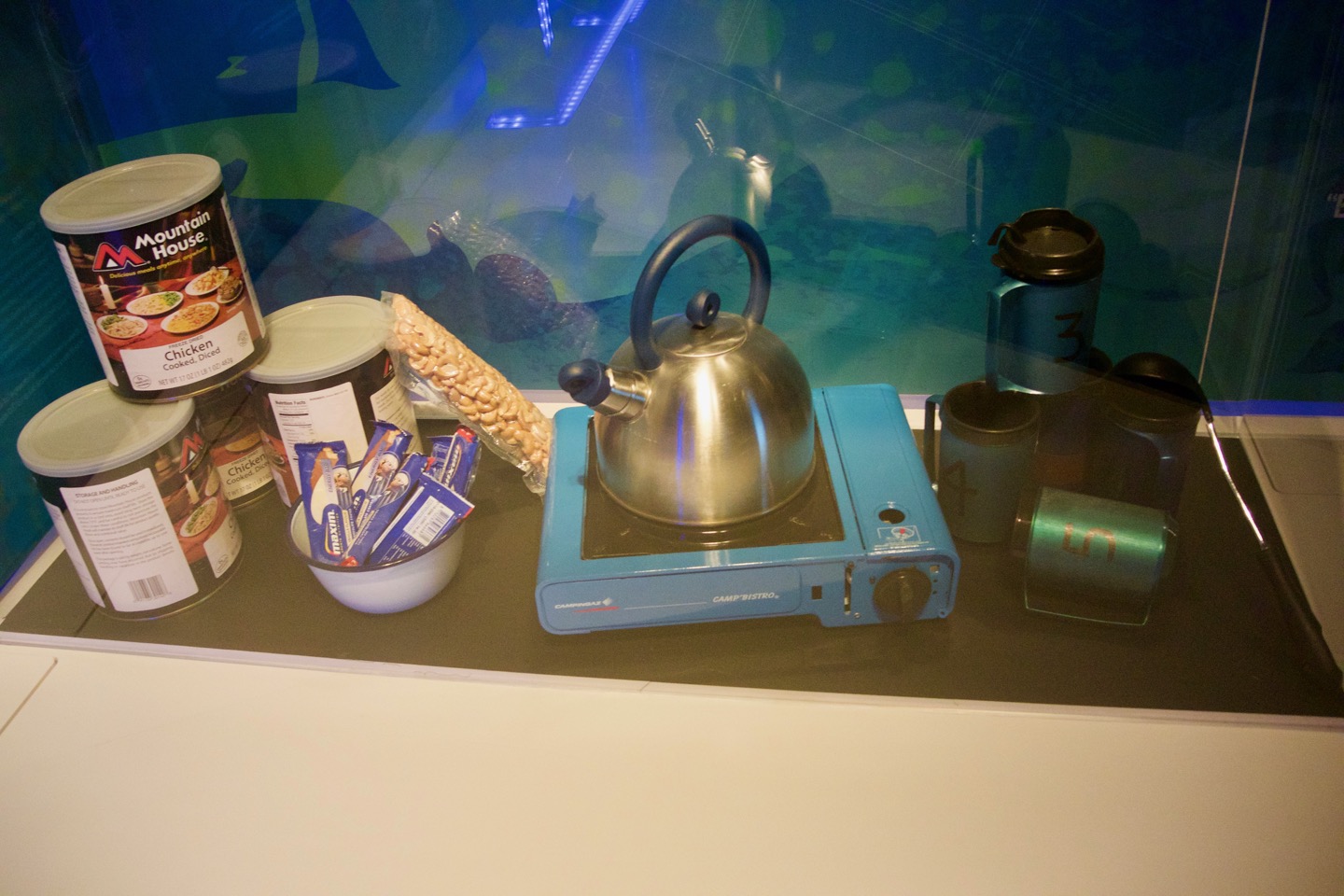
Two days were enough at the hefty prices in Alicante and we moved on, despite light winds. Better to spend a few Euros on Diesel fuel than a lot more on another night in a marina. After some 35 miles we stopped for a swim at Cala la Fosa but found it too rolly to stay for the night and went to seek better shelter in one of the bays around Isla del Portichol, after Cabo de la Nao where the land curves back inwards again.
